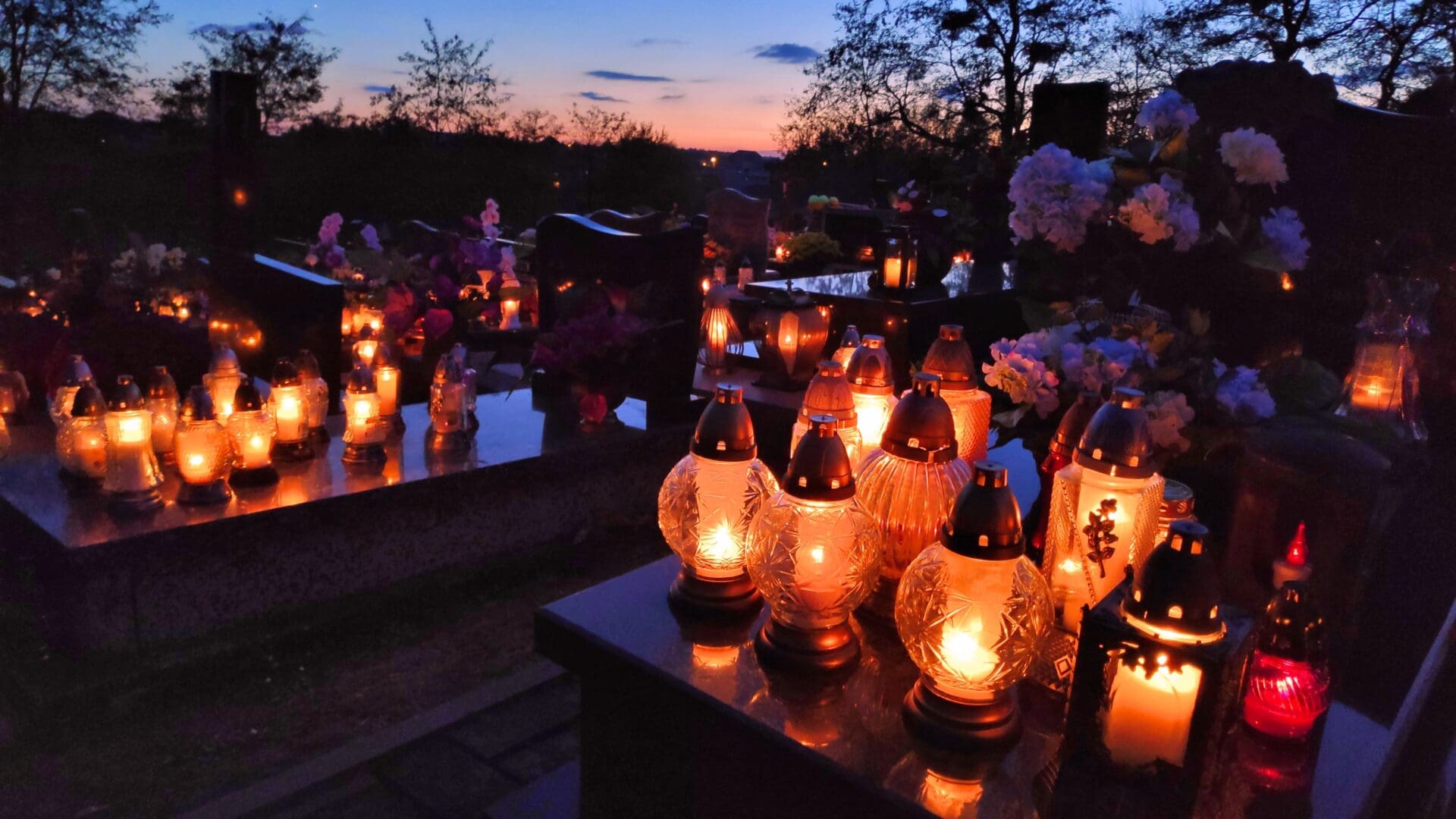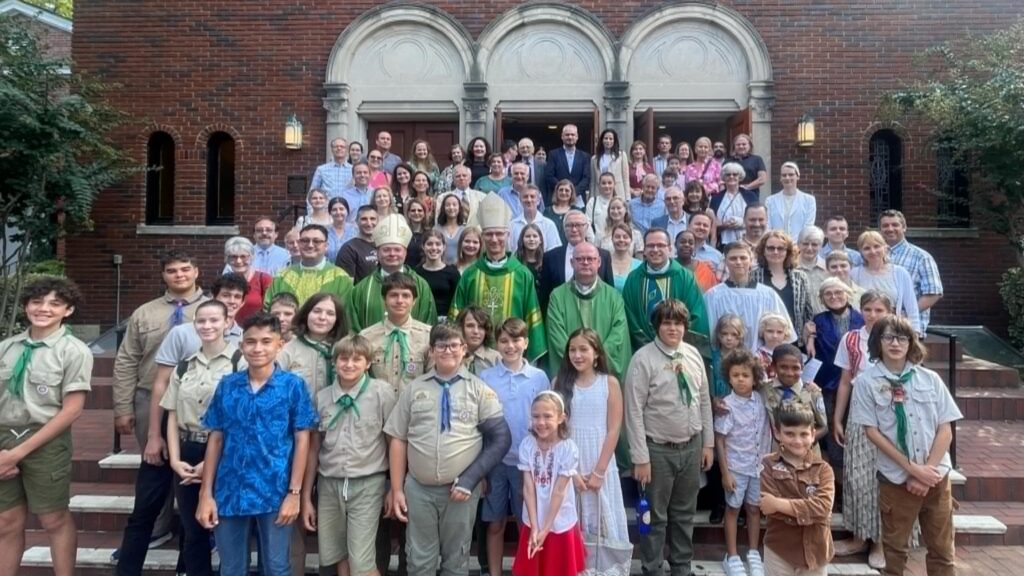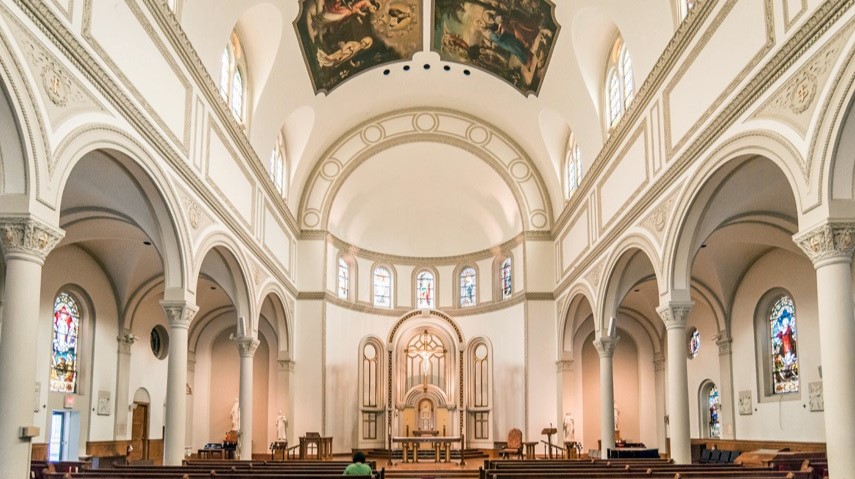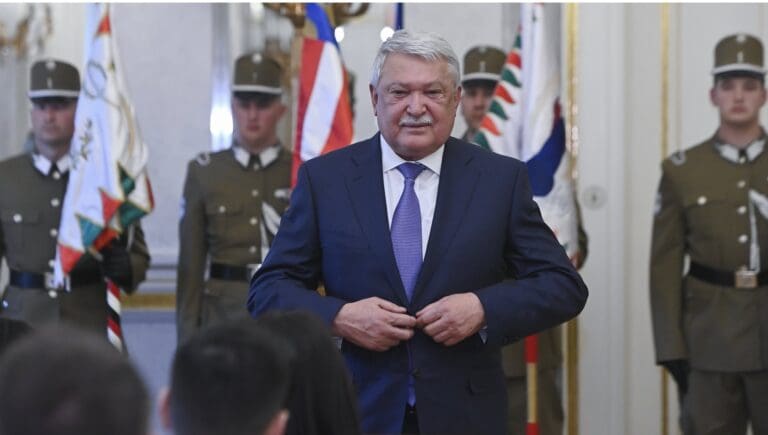The Catholic Church today celebrates the most solemn feast of All Saints in which we are invited to share in their heavenly jubilation. ‘The Saints are not [solely] a small caste of chosen souls but an innumerable crowd’, as Pope Benedict once said, ‘…the baptized of every epoch and nation who sought to carry out the divine will faithfully and lovingly….We are unacquainted with the faces and even the names of many of them, but with the eyes of faith we see them shine in God’s firmament like glorious stars’.
All Saints’ Day is also commemorated by the Eastern Orthodox Church and the many Eastern Rites that are in union with Rome. For Catholics, it is a Holy Day of Obligation, i.e., all Catholics are required to attend Mass on this day, unless a justifiable reason exists.
History of the Feast
Some scholars hold that this feast has its origins from paganism with the festival of Samhain, the Celtic New Year. Normally celebrated from 31 October to 1 November, the Celts gathered to welcome in the harvest and usher in ‘the dark half of the year.’ This claim is, however, disputed since the celebrations for All Saints fell on different days, based on the country in which they were celebrated.
It was Pope Gregory III (731-741) who formally instituted the feast on 1 November
when he consecrated a chapel to all the martyrs in Saint Peter’s Basilica in Rome; he then required the Feast of All Saints to be observed annually. Surprisingly, this celebration was originally confined to the Diocese of Rome. It was not until Pope Gregory IV (827-844) assumed the Throne of St Peter that the feast was extended to the entire Church on that day.
Initially, the early Church only honoured martyrs—those who were killed for the faith without denying it—as saints, as can be seen in the Roman Canon of the Mass (the first Eucharistic Prayer). In fact, it was not until the fifth century that a non-martyr, St Martin of Tours (316 or 336-397), was first recognized as a saint by the Catholic Church. When martyrdoms increased during the persecutions of the late Roman Empire, local dioceses instituted a common feast day was appointed for all martyrs, known and unknown, as early as the year 270 AD.
The first record, however, we have of this common feast being formally celebrated was towards the end of the fourth century in Antioch—where ‘the disciples were first called Christians’ (Acts 11, 26)— and when Saint Ephrem the Syrian mentioned it in a sermon in 373 AD. This date would later coincide with the Roman festival for the anniversary of the Dedicatio Sanctae Mariae ad Martyres (Dedication of St Mary and all the Martyrs), when Pope Boniface IV in 609 dedicated the Pantheon in Rome as a church under the Virgin Mary and all the martyrs.
In English, the traditional name for All Saints Day was All Hallows Day—hallow was a saint or holy person. The vigil or eve of the feast, 31 October is still commonly called All Hallows Eve or Halloween. Notwithstanding concerns in recent years about the so-called pagan origins of Halloween,
the vigil was celebrated from the beginning—long before Irish practices, stripped of their pagan origins (just as the Christmas tree was stripped of similar connotations), were incorporated into popular celebrations of the feast.
The Feast of All Saints is followed the day after by the Commemoration of the Dead or All Souls, which dates back only to 998. On that day we pray for the purification of the souls in purgatory so that they may enjoy the eternal bliss in heaven.
The Making of a Saint
In the Catholic Church, the Dicastery for the Causes of Saints, formerly called the Congregation for the Causes of Saints, is the department or tribunal of the Roman Curia that oversees the process that leads to the canonization of saints, passing through the steps of a declaration of ‘heroic virtues’ and beatification. The procedure, which is a juridical one, is based on the works of the Cardinal Archbishop of Bologna Prospero Lambertini, the future Pope Benedict XIV (1740-1758). Prior to that saints were acclaimed by local bishops and their communities as such.
After preparing a case, including the approval of miracles, the Dicastery presents it to the pope—he can always dispense from the requirement of a miracle—who decides whether or not to proceed with beatification or canonization of the candidate. While the pope, as Successor to St Peter, has the authority to even proclaim any person as a saint without the canonization process, such a proclamation is distinct from declaring a dogma as an article of faith, which falls within papal infallibility as taught by the First Vatican Council in 1870.
Many, Protestants in particular, have a huge misconception of our veneration of saints.
They believe that, for example, when we Catholics kneel before an image of a saint or when a priest incenses it during a celebration we are committing idolatry. The image is there to help us focus on the person whom we are honouring and asking for their intercession, just like when we kiss a photo of a loved one, for example, it does not mean we worship the photo paper itself.
‘The Saints’, as Benedict XVI said, ‘are friends and models of life for us. Let us invoke them so that they may help us to imitate them and strive to respond generously, as they did, to the divine call. In particular, let us invoke Mary, Mother of the Lord and mirror of all holiness. May she, the All Holy, make us faithful disciples of her Son Jesus Christ! Amen.’








